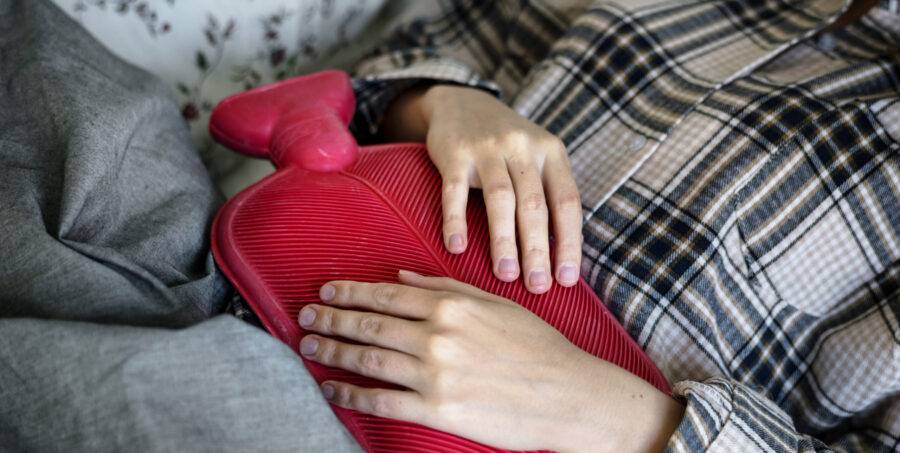Understanding Menstrual Cramps and Effective Treatments

Introduction:
Menstrual cramps, medically known as dysmenorrhea, are a common and often uncomfortable part of a woman’s menstrual cycle. These cramps typically occur just before and during menstruation, affecting millions of women worldwide. While some women may experience mild discomfort, others endure severe pain. In this blog, we will delve into what menstrual cramps are, their causes, and explore effective treatments to manage this common issue.
What Are Menstrual Cramps?
Menstrual cramps are painful sensations that many women experience during their menstrual periods. They are often described as a dull, throbbing, or cramping pain in the lower abdomen. This discomfort typically starts a day or two before menstruation begins and can last for a few days into the period. Cramps vary in intensity from person to person and can range from mild to severe.
Primary vs. Secondary Menstrual Cramps: –
Primary Dysmenorrhea: These are common menstrual cramps and typically begin a day or two before menstruation. They are caused by the release of prostaglandins, hormone-like substances that trigger uterine contractions to help shed the uterine lining. Mild to moderate primary dysmenorrhea is considered a normal part of the menstrual cycle for many women.
Secondary Dysmenorrhea: This type of menstrual pain is often caused by an underlying medical condition, such as endometriosis or fibroids. Secondary dysmenorrhea typically begins earlier in the menstrual cycle and is often more severe. It’s essential to consult a healthcare provider if you suspect you have secondary dysmenorrhea.
Causes of Menstrual Cramps:
As mentioned earlier, the primary cause of menstrual cramps is the release of prostaglandins, which trigger uterine contractions to expel the uterine lining. However, secondary dysmenorrhea can be caused by a variety of underlying medical conditions, including:
- Endometriosis: A condition in which tissue similar to the uterine lining grows outside the uterus.
- Fibroids: Noncancerous growths of the uterus that can cause pain and heavy menstrual bleeding.
- Adenomyosis: When the uterine lining grows into the uterine muscle.
- Pelvic Inflammatory Disease (PID): An infection of the reproductive organs.
- Cervical Stenosis: A narrowing of the cervix, which can impede the flow of menstrual blood.
Treatment Options for Menstrual Cramps:
Thankfully, there are several treatment options available to alleviate the discomfort of menstrual cramps:
- Over-the-Counter Pain Relievers: Non-prescription medications such as ibuprofen or naproxen can help reduce pain and inflammation. It’s important to take these medications as directed.
- Heat Therapy: Applying a heating pad or hot water bottle to the lower abdomen can help relax the muscles and ease the pain.
- Exercise: Regular physical activity, especially cardiovascular exercise, can help reduce the severity and duration of menstrual cramps.
- Dietary Changes: A diet rich in fruits, vegetables, and whole grains, while limiting caffeine, alcohol, and salt intake, can potentially reduce cramp severity.
- Hormonal Birth Control: For those with severe menstrual cramps, hormonal birth control methods such as birth control pills, patches, or intrauterine devices (IUDs) may help regulate periods and reduce cramp severity.
- Alternative Therapies: Some women find relief from acupuncture, acupressure, or herbal remedies like ginger or chamomile tea.
- Prescription Medications: In cases of severe cramps, a healthcare provider may prescribe stronger pain medications or hormone-based treatments.
- Surgery: For those with severe underlying conditions like endometriosis or fibroids, surgical options may be considered.
Read more from our Menstrual Cramps Treatment Market study.
Conclusion:
Menstrual cramps are a common part of a woman’s life, and while they can be uncomfortable, there are various treatments available to alleviate the pain. It’s essential to consult a healthcare provider if your cramps are severe or if you suspect an underlying medical condition. With the right approach, you can manage menstrual cramps and enjoy a more comfortable menstrual cycle.
– Analyst Team
IHR Insights
inquiry@ihrinsights.com

